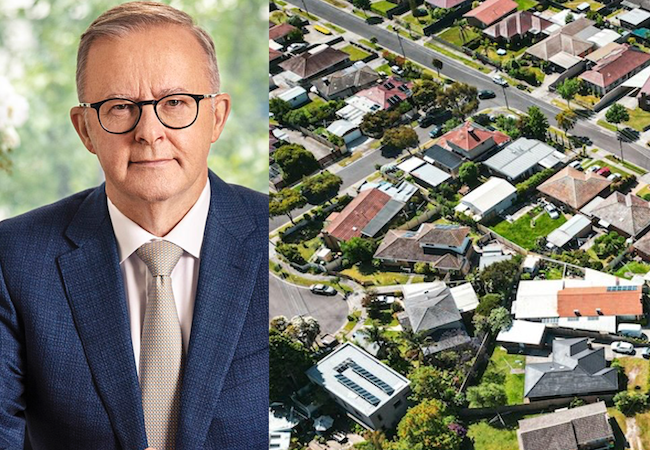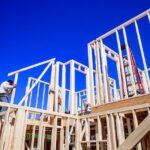Australia’s housing crisis has reached a critical point, and many hoped Labor’s historic electoral win would usher in meaningful change. However, despite unprecedented political strength, sufficient housing reform may remain elusive this term.
Labor’s 2025 electoral triumph stands out for three main reasons: the party secured a record number of seats, achieved this success with just 34.7% of the primary vote, and saw the Coalition suffer its worst defeat in electoral history. With increased control in the Senate and support from the Greens, the Labor Government appears well-positioned for legislative action. Optimism around housing reform surged following the win, especially given the current crisis in affordability and supply.
Over the last 40 years, Australian house prices have skyrocketed by approximately 150%, even after adjusting for inflation. This spike is largely attributed to rapid population growth, chronic housing undersupply, and persistently low interest rates. Government tax incentives such as negative gearing and capital gains tax discounts have also played a role, fueling demand and making speculative investment highly profitable.
Labor’s current housing plans include 100,000 homes for first-time buyers, five per cent deposit schemes, Help to Buy program, and Build to Rent initiatives. These measures are designed to boost ownership but may inadvertently increase demand, pushing prices even higher. Talks around reforming negative gearing surfaced briefly in 2024 but were quickly dismissed.
The Greens, while holding Senate influence, have historically pushed Labor to revisit housing tax policies. Yet past actions suggest limits to their power. In the previous Parliament, they pressed hard for stronger reforms, but ultimately conceded. Some analysts believe this intransigence may have cost them Lower House seats.
Despite strong electoral positioning, Labor is unlikely to enact significant reform. Nearly half the Australian population has a mortgage. Any move that lowers home values could push homeowners into negative equity, sparking widespread voter backlash. Housing-related reforms have historically triggered electoral disaster. Politicians remain wary of repeating past mistakes. Labor’s bruising 2019 loss, largely due to ambitious policies, still looms large. As Housing Minister Clare O’Neil alluded to, stable or rising house prices remain a political necessity.
Dropping property values may seem like a solution to affordability. However, they could devastate voter confidence and personal wealth. Opposition leader Peter Dutton has openly stated that protecting house prices is critical, hinting at the strong political forces resisting reform.
Australia is not alone in its struggle. In 2021, New Zealand’s Labour Party achieved a majority government — a rare event in its mixed-member proportional system. With no upper house to block legislation, they had full power to act. Despite this, they failed to introduce significant reforms. Fear of losing landlord support and voter backlash prevailed. The New Zealand Labour Government was eventually voted out in 2024, and its housing crisis remains unsolved.
In the 2019 election, Bill Shorten’s Labor proposed changes to capital gains tax and negative gearing. The Coalition, backed by a strategic campaign from Tim Wilson against franking credit reforms, effectively stirred public fear. The result? A clear rejection of Labor’s bold agenda. Voters sent a message: don’t mess with housing policy unless you’re ready for fierce resistance.
Labor isn’t the only party to suffer for reform attempts. In 2004, the Coalition’s WorkChoices policies, passed with Senate control, triggered major backlash and led to their 2007 defeat. Similarly, in 2010, Labor’s Julia Gillard introduced a carbon tax after promising not to. That breach helped the Coalition return to power in 2013. Trust once broken is hard to rebuild — especially on sensitive economic issues like housing.
Today’s Labor leadership seems intent on avoiding missteps. By sticking closely to campaign promises, they minimize risks. Without broad public support, structural housing reform is unlikely this term. Instead, ambitious reform may be postponed to 2028, when the party can present it clearly during an election campaign — with a mandate to act.
History suggests that successful reform often follows electoral endorsement. The Hawke and Keating Governments made sweeping changes only after campaigning for them. John Howard’s GST was introduced in 1998, five years after its initial rejection. Labor may follow a similar path, preparing the ground for 2028.
One major hurdle for reform remains: the Coalition’s alignment with landlords. This reliable support base makes it politically profitable to oppose housing reforms that might affect investment property values. Unless this dynamic changes, any future Labor reform push will face fierce resistance.
Ultimately, the success of Labor’s housing reform efforts depends on voter sentiment. Without a broad national consensus, even the most well-intentioned policies may fail to materialize. For now, reform talk may remain just that — talk.
Despite holding significant political capital, Labor remains constrained by electoral risks, historical failures, and voter sensitivity to property prices. Real reform will likely require more than just Senate control. It will need a clear, courageous mandate backed by public support — something that may only emerge over time. Until then, any dreams of sufficient housing reform are likely to remain politically unrealistic.




